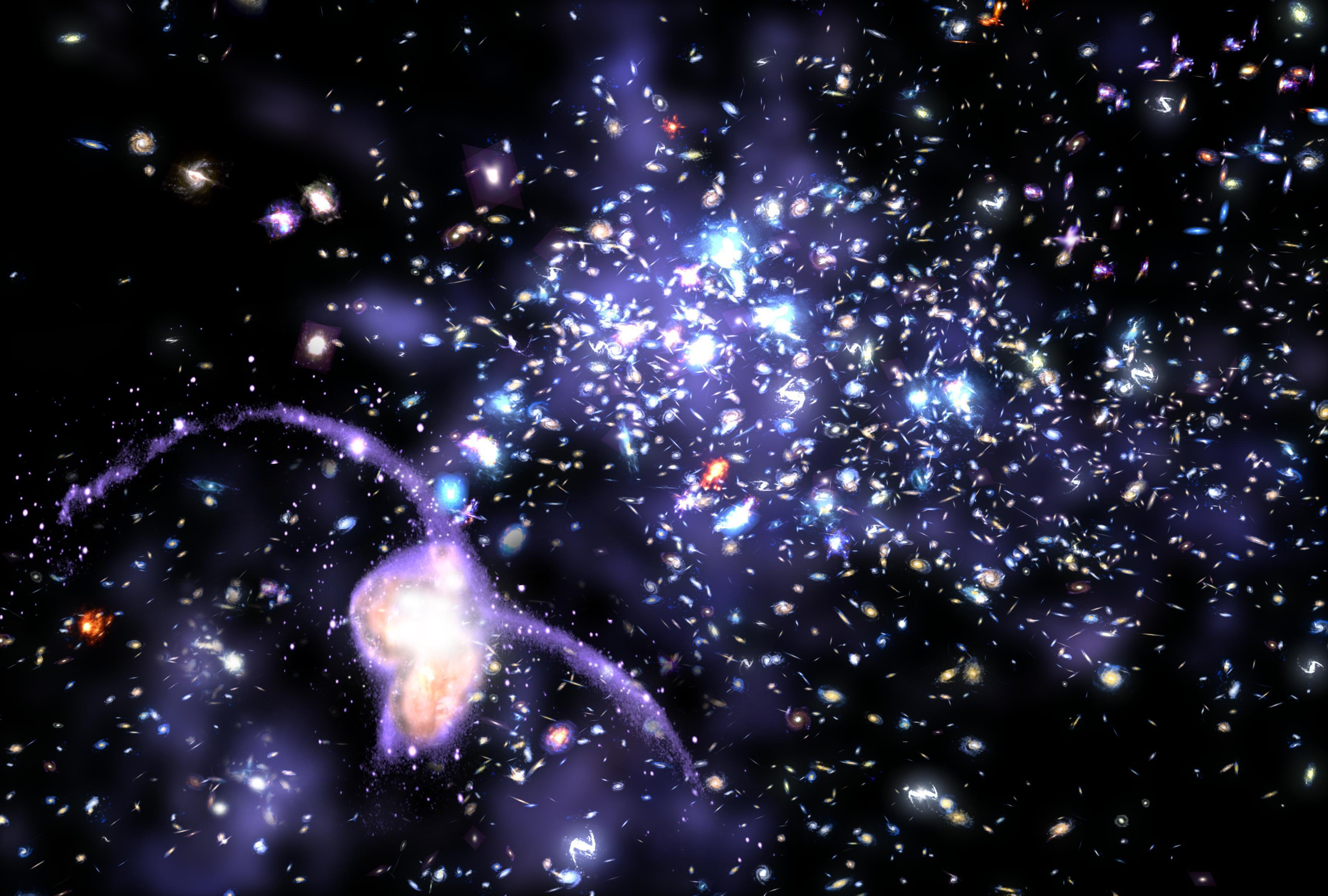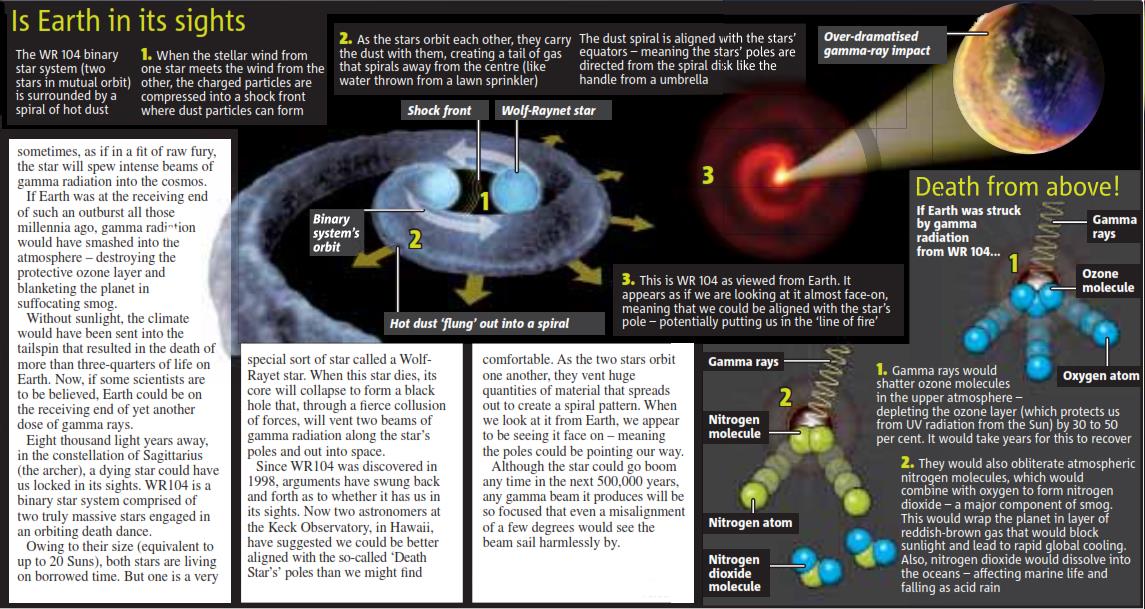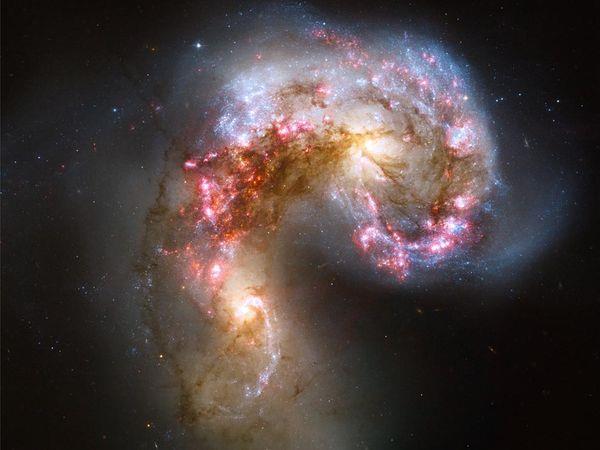Colliding Interacting Galaxies
The Colliding or Interacting Spiral Galaxies of Arp 271
Explanation: What will become of these galaxies? Spiral galaxies NGC 5426 and NGC 5427 are passing dangerously close to each other, but each is likely to survive this collision. Most frequently when galaxies collide, a large galaxy eats a much smaller galaxy. In this case, however, the two galaxies are quite similar, each being a sprawling spiral with expansive arms and a compact core. As the galaxies advance over the next tens of millions of years, their component stars are unlikely to collide, although new stars will form in the bunching of gas caused by gravitational tides. Close inspection of the above image taken by the 8-meter Gemini-South Telescope in Chile shows a bridge of material momentarily connecting the two giants. Known collectively as Arp 271, the interacting pair spans about 130,000 light years and lies about 90 million light-years away toward the constellation of Virgo. Quite possibly, our Milky Way Galaxy will undergo a similar collision with the neighboring Andromeda Galaxy in about five billion years.

This image of a pair of interacting galaxies called Arp 273 was released to celebrate the 21st anniversary of the launch of the NASA/ESA Hubble Space Telescope.
The distorted shape of the larger of the two galaxies shows signs of tidal interactions with the smaller of the two. It is thought that the smaller galaxy has actually passed through the larger one.
Antennae Galaxies
NASA, ESA, Hubble Heritage Team (STScI/AURA)-ESA/Hubble Collaboration
A Hubble Space Telescope image shows unprecedented detail of the Antennae galaxies, an intense star-forming region created when two galaxies began to collide some 200 million to 300 million years ago. The bright, blue-white areas show newly formed stars surrounded by clouds of hydrogen, which are colored pink. A similar collision is expected between our galaxy, the Milky Way, and the nearby Andromeda galaxy in several billion years.

NASA recently released a spectacular photo of thousands of galaxies gathered in a sort of family album. This picture is a symbol of the technology being used by astronomers worldwide to capture a glimpse of the vast universe that surrounds us, and of the progress mankind has made in the last centuries.
There are probably more than one hundred billion (1011) galaxies in the observable universe, and most of them are separated by millions of light-years of intergalactic space. When many galaxies converge to form a dense agglomeration of galaxies, they form a hierarchy of associations called clusters, which, in turn, can form larger groups called superclusters. These larger structures are generally arranged into sheets and filaments, which surround immense voids in the universe.
To give you an idea of the immensity of the universe, let me remind you that dark matter appears to account for around 90% of the mass of most galaxies, so if what you see looks impressive, think about what it means compared to the invisible side of the universe.
The Local Group is the group of galaxies that includes our galaxy, the Milky Way. The group comprises over 30 galaxies, with its gravitational center located somewhere between the Milky Way and the Andromeda Galaxy. The galaxies of the Local Group cover a 10 million light-year diameter and have a binary shape.
Very little is known about the size of the universe. It may be trillions of light years across, or even infinite in size. A 2003 paper claims to establish a lower bound of 24 gigaparsecs (78 billion light years) on the size of the universe, but there is no reason to believe that this bound is anywhere near tight.
The fact that we are able to make such predictions based on observations means that we are really on the right track to understanding where we come from and where we are heading. Looking at this picture makes you realize that, on a cosmic scale, we're not so important, after all, and possibly not even alone in this vast expanse of space.



![]()

A free template by Lucknowwebs.com for WYSIWYG WebBuilder 8
Galaxies
Copyright © by Nigel G Wilcox · All Rights reserved · E-Mail: ngwilcox100@gmail.com
Main Index
Space Cosmology
Designed by Nigel G Wilcox
Science Research
*
About
Science Research
Science Theories
Desk
Site Map
BookShelf
Powered By AM3L1A
Galaxies
Pages:
Credit: NASA, ESA and the Hubble Heritage Team (STScI/AURA)
Pages within this section:
Galaxies
1
2
3
Sub-Menu
4
5
6
7
8
9














